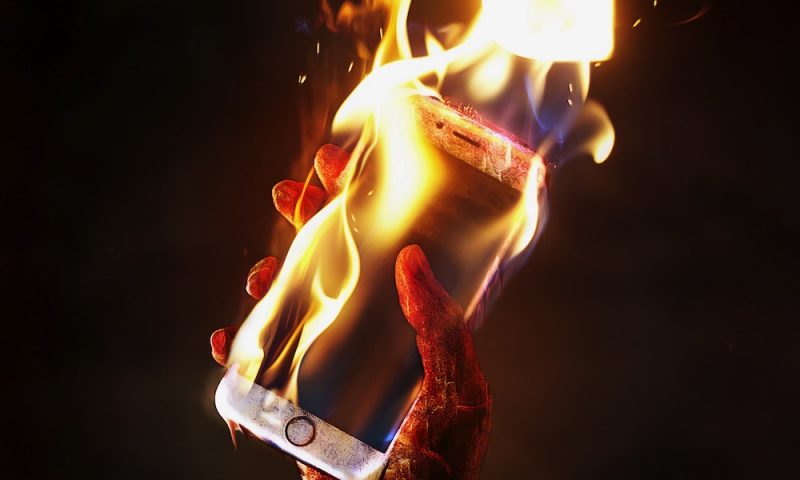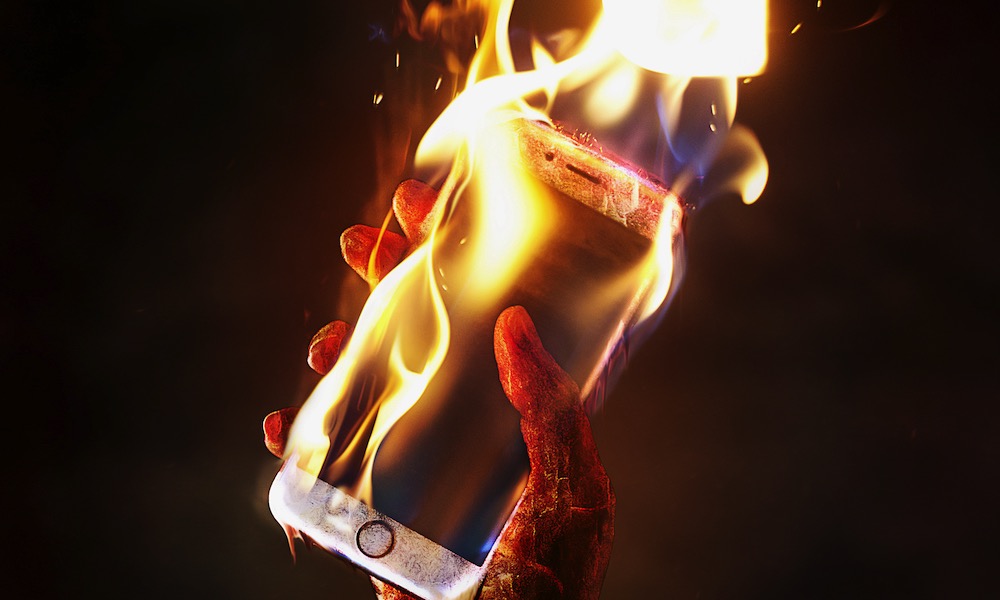Too Hot to Handle? iPhone 15 Owners Report Serious Overheating

 Credit: Amanda Carden / Shutterstock
Credit: Amanda Carden / Shutterstock
While it’s not uncommon for new product launches to run into a few snags, it seems that Apple’s iPhone 15 lineup is blazing new trails, with reports from many early adopters that their new iPhone 15 units are generating abnormally excessive amounts of heat — even when sitting still.
Multiple reports are surfacing on X (the social network formerly known as Twitter) and Reddit from folks who have found their iPhones getting uncomfortably hot, to the point of being “almost too hot to touch.”
Although most of the reports we’re seeing point to the larger iPhone 15 Pro Max, the issue seems to affect the iPhone 15 Pro as well, which makes sense as they both use the same A17 Pro chip. The slant toward the 6.7-inch model is likely just because that’s the preferred choice of more serious power users.
While early reports pointed to USB-C fast-charging as a possible culprit, a post on Apple’s Community Discussions forums involves several users experiencing extreme heat levels when doing little more than making phone calls or even just leaving their new iPhone 15 Pro seemingly idle. As of this writing, that post has gathered over 1,400 “Me too” upvotes.
Some of the heating problems may be related to the usual processing that occurs when first setting up and using a new iPhone — a Reddit user’s concerns were dismissed by some commenters based on restoring an iCloud backup, which tends to be a performance-intensive process. However, there appears to be considerably more to it than just this.
As more users have encountered and reported overheating issues with their new iPhones, it’s becoming more apparent that this isn’t part of any kind of normal “break-in” period.
As shared by 9to5Mac, a Korean YouTuber, BullsLab, used a Forward-Looking Infrared (FLIR) camera to conduct thermal imaging tests on an iPhone 15 Pro Max where he measured temperatures as high as 46.7 degrees Celsius (116 degrees Fahrenheit) during demanding use.
Vadim Yuryev of Max Tech also performed a similar test, comparing an iPhone 15 Pro Max to an S23 Ultra using a thermal camera, revealing that the iPhone lacks good cooling and only wins out because Apple throttles the A17 Pro chip due to the excessive heat.
This creates a potentially more serious problem than just a hot iPhone, with other tests showing that it loses up to 25% of its performance after only two minutes under heavy load and up to 34% after 20 minutes, with Apple’s newly-re-designed GPU seemingly the biggest culprit.
Although some apologists have theorized that it’s merely the titanium materials in the iPhone 15 Pro allowing the heat to escape more effectively, that doesn’t make sense in light of the thermal imaging and processor throttling, which indicates that the internals are heating up beyond normal levels.
Another theory shared by developer Steve Moser suggests that the problem could be indirectly related to Apple’s eSIM-only design for US iPhone models since some have observed a trend that international iPhone 15 Pro. models are overheating more than those sold in the US.
What To Do If Your iPhone 15 Pro is Overheating
Firstly, it’s worth mentioning that while these high temperatures may make your iPhone 15 Pro uncomfortable to hold, they’re well within safety standards. As ZDNet points out, the international standards organization ASTM (formerly known as the American Society for Testing and Materials) states in its Standard Guide for Heated System Surface Conditions that Produce Contact Burn Injuries that “the average person can touch objects up to 60°C/140°F for up to five seconds without sustaining irreversible burn injuries.”
Nevertheless, while iOS should be shutting your iPhone down if it gets hot enough to cause serious damage to its internal components, it’s a good idea to keep it running as cool as possible.
If you think your iPhone 15 Pro — or any iPhone model, for that matter — is getting too hot to handle, the safest thing to do is unplug it and power it down entirely for a while by holding down the side and volume up buttons and swiping the power-off slider. Let it sit in a reasonably cool place until it drops to a more comfortable temperature. Don’t try to forcibly cool it by putting it in your refrigerator or freezer.
If overheating occurs only while charging, you may need to opt for slower charging speeds. Try using a lower-power USB-A charger with a USB-A to USB-C cable. Wireless charging may also be an option; however, that typically also generates heat under even normal conditions, which is why some companies have started building wireless chargers with built-in cooling systems.
While it’s possible that Apple’s A17 Pro chip is just too much to pack into such a small mobile device, it’s hard to believe that Apple wouldn’t have discovered heating problems as serious as these during its development and testing cycles. This suggests there’s more likely a bug in iOS 17.0.2, an iPhone 15-specific update pushed out after the new iPhones shipped and, therefore, may not have been tested as extensively. If so, then hopefully, Apple is already working on a fix in an upcoming iOS 17.0.3 or 17.1 update.







